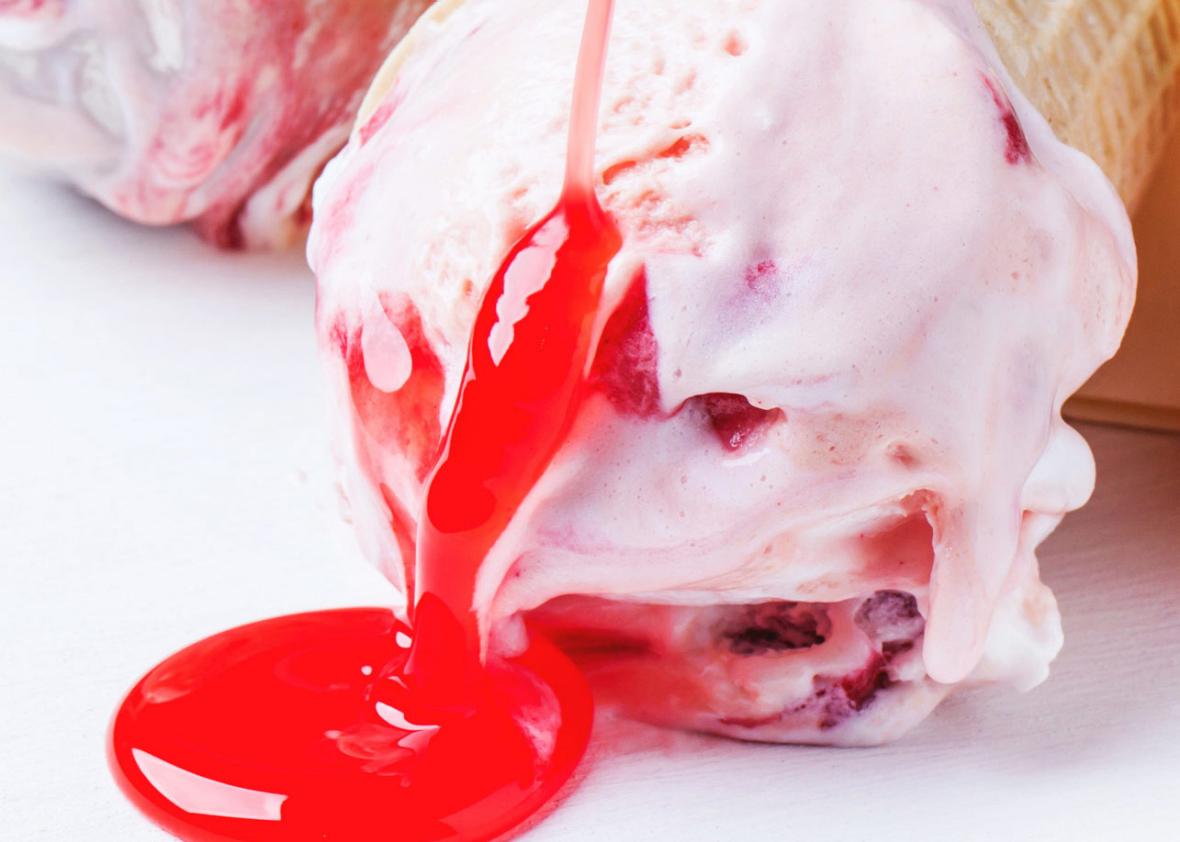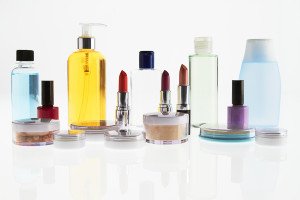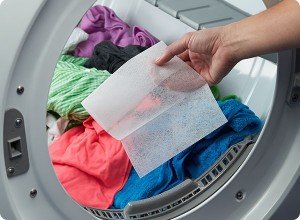Food Doesn’t Have to Wear Makeup
7 min read
Food coloring has no purpose and plenty of negatives. We only allow it still because the system is broken.
In Britain, McDonald’s fries have four ingredients: potatoes, vegetable oil, dextrose, and salt. In the U.S., McDonald’s fries have a whopping 19 ingredients—including sodium acid pyrophosphate, which keeps the fries’ color from getting dull. This is strange since you’d think that all we really expect of French fries is for them to at least vaguely mimic the color of a potato. Then there’s McDonald’s strawberry sundae. In Britain’s version, all the color comes from real strawberries. In the U.S., we use Red No. 40. This plays out beyond the fast food chain: For example, Starburst fruit chews are colored with carotenes and chlorophylls across the Atlantic but with Red No. 40 and Yellow No. 6 in the U.S. Many major food companies in the U.S. use artificial food dyes in America—while selling naturally colored or dye-free versions in Europe.
Chemicals like Red No. 40, Yellow No. 5, and Blue No. 1 make American food look better. These additives are the culinary equivalents of lipstick and mascara, and they are often made from the same pigments. Making food pretty has become the status quo in the U.S., but it’s not doing us any good: Not only does it trick us into thinking some foods are healthier than they are, but the dyes themselves may be harmful. So why do we use keep using these dyes when so many other countries manage without them?
It wasn’t always this way. Until the mid-19th century, natural food dyes from plants, animals, and minerals were used to color food in the U.S. Things changed when companies discovered artificial dyes which were cheaper, brighter, and more stable than their natural counterparts. Artificial dyes made food look more attractive, which made them popular with consumers. America is a relatively young and expansive country, and a major historical concern involved feeding a growing population while moving food large distances. Food was treated like a commodity, with market forces shaping what were most valued: cost, convenience, and appearance. For decades, there was little push to fret—as Europeans did—about what was actually in our food. We just wanted it to look good.
The safety of artificial food coloring has been debated for decades. Animal studies have linked high doses of food dyes to organ damage, cancer, and birth defects. In humans, food dyes have been linked to behavioral problems in children. Most of the studies on the effects of food dyes in humans looked at children with behavioral problems like hyperactivity and ADHD, and found that food dyes made their symptoms worse. Two large, groundbreaking studies funded by the British government tested healthy children and found that they, too, were adversely affected by food dyes. The most recent of these studies, published in the Lancet in 2007, evaluated six dyes, including Red No. 40 and Yellow No. 5, and concluded that artificial coloring was associated with increased hyperactivity in otherwise healthy children.
After the Lancet study was published, some academic skeptics who had doubted parental claims that food dyes affected the behavior of healthy children admitted they might have been wrong. In 2010, the European Parliament passed a law requiring warning labels on products with any of the six tested food dyes, and banned the use of food dyes for infants and young children, effectively ridding much of the European food supply—which had low amounts of artificial food dyes to begin with—of artificial food coloring. The doses used for some of the kids in this study, 20 to 30 milligrams of artificial food coloring, were not as high as those typically ingested by American children—in fact, kids often consume far higher doses than what was found to be harmful in clinical trials.
The Food and Drug Administration reacted differently to the same evidence. A 2011 FDA report stated that a causal relationship between dyes and hyperactivity was not conclusively established based on available research, though the report conceded that dyes made symptoms worse in children with ADHD and other preexisting behavioral problems. Since this report was published, evidence that food dyes cause problems has continued to mount. A 2012 review stated that the negative effects of food dyes on children’s behavior weren’t confined to those with ADHD. The latest report from the Center for Science in the Public Interest, released in January, lamented the FDA’s inaction and cautioned, “the harm to children and the costs to society from dyes are needless and preventable.”
It is true that pulling conclusive, universal findings from scientific research is a difficult task. Sure, there may be evidence suggesting harm from food additives, but some of the research was performed in animals and may not apply to humans. More high-quality research is needed to determine what happens when healthy people ingest typical doses of common food additives. We still don’t understand exactly what could be causing the negative effects food coloring seems to have on kids with certain conditions. All of these caveats are important to recognize.
But when it comes to food coloring, why should we have to prove just exactly howand why the substance causes a negative effect on the people who consume it before we can ban it? If this were a necessary or meaningful food ingredient in any way, sure, that would be a reasonable standard. But food coloring has no nutritional value. Why are we risking it?
Food coloring has no nutritional value. Why are we risking it?
Most likely because it helps companies sell products. Pretty food pays off because aesthetics in food do matter. We have relied on visual cues for thousands of years to help us determine what is edible, nutritious, and safe to eat. Man has adapted to appreciate natural colors, including a variety of green, red, pink, orange, yellow, and purple produce: Colors signal that food is ripe or that it contains healthy compounds. Because of that evolutionary background, color is money for food manufacturers. Children are especially attracted to a variety of bright, vibrant colors and succumb to targeted marketing. Food dyes make processed food more appealing. For example, margarine was originally white—manufacturers wanted to tint it yellow to appeal to the public. Butter producers objected, saying this would deceive the public. (In fact, butter is also naturally pale and dyed yellow.)
Food aesthetics can also affect how we perceive taste. In one study, when subjects were given sugar water in different shades of red, they reported that the deep red drinks tasted sweeter than the light red ones. We’ve been primed to expect certain things from certain colors: Another study showed people had a harder time identifying drink flavors when the drinks didn’t have the expected colors (an orange-colored drink that was really cherry-flavored tasted like an orange). We expect what nature has taught us, and even though our food system has changed radically in the past several decades, our expectations have yet to catch up. Food companies can instead use this knowledge to trick us and make their processed products appear more palatable.
The reason why food coloring is still allowed is wrapped up in the different approach the U.S. takes to food regulation. A key element of the European Union’s public health protection policy is the “precautionary principle,” under which credible evidence of danger to human health merits protective action despite scientific uncertainty. Unlike the EU, the U.S. government sets high standards for proof of harm before regulatory action is taken. In fact, the FDA’s “Generally Recognized as Safe” (GRAS) designation, introduced in 1958, allows companies to evaluate their own substances and deem them acceptable themselves, after which the FDA can review the evaluation—if it wants to. While this makes sense for ingredients like salt and pepper, GRAS lets producers take new food additives to the market without even informing the FDA. Trans fat was classified as GRAS until the label was withdrawn in 2015.
As ingredient lists in other parts of the world show us, it’s possible to still get basically the same experience without the potentially negative consequences. Consumer demand can drive change. Parents and activists have been petitioning food companies to remove dyes for years, and some are obliging: In February, candy giant Mars agreed to remove artificial food coloring in all of its human food products over the next five years. Mars’ recent decision echoes those made by other food industry behemoths including Kraft, Nestle, and General Mills. We’re lucky to have producers take this action, but we shouldn’t have to wait for their benevolence.
Last month, six former commissioners of the FDA met in Aspen, Colorado, to critique the agency. They pointed out that thousands of food additives are a part of our food system because of the GRAS loophole, one that leaves safety decisions to the producers rather than the FDA. We should tell the FDA that we demand more: It is their job to keep us safe from these unnecessary chemicals. In the quandary over brighter mac and cheese and the risk of hyperactivity, the answer is easy—let’s tone down our food.



